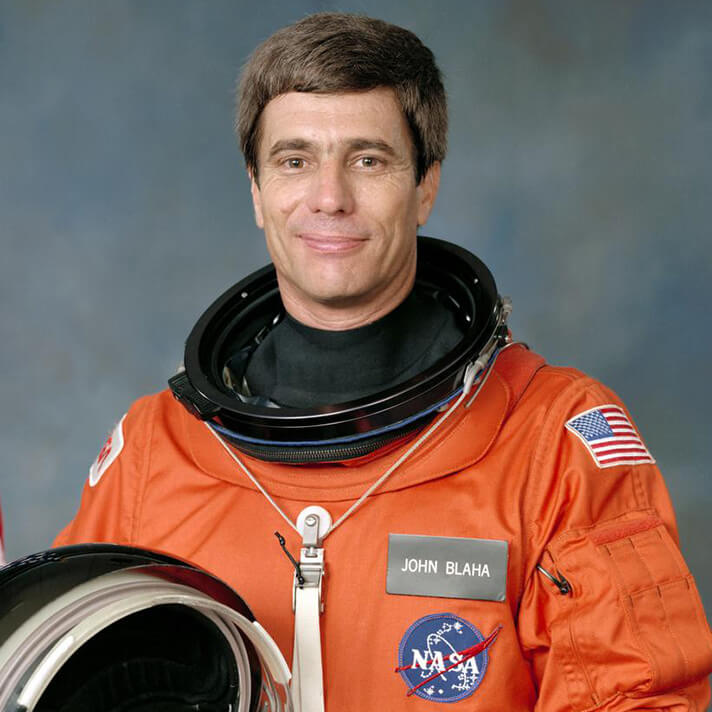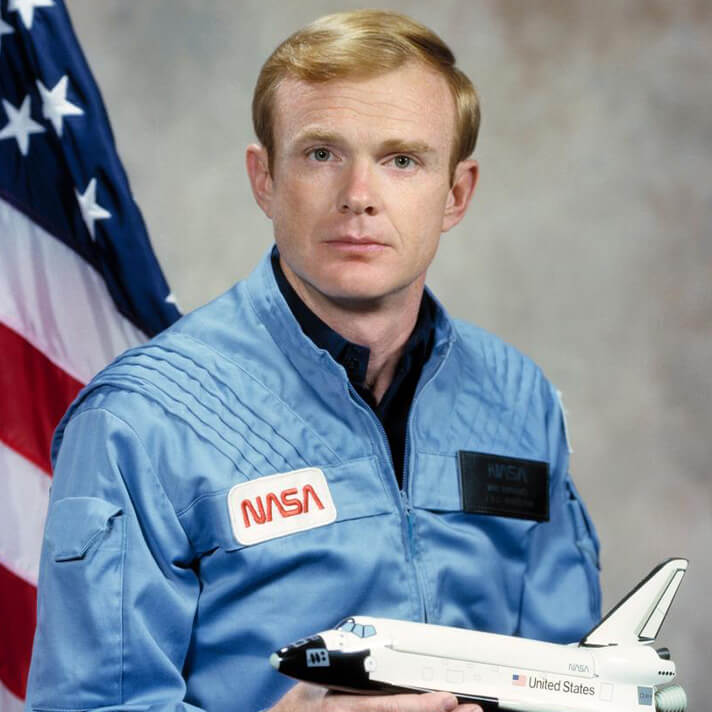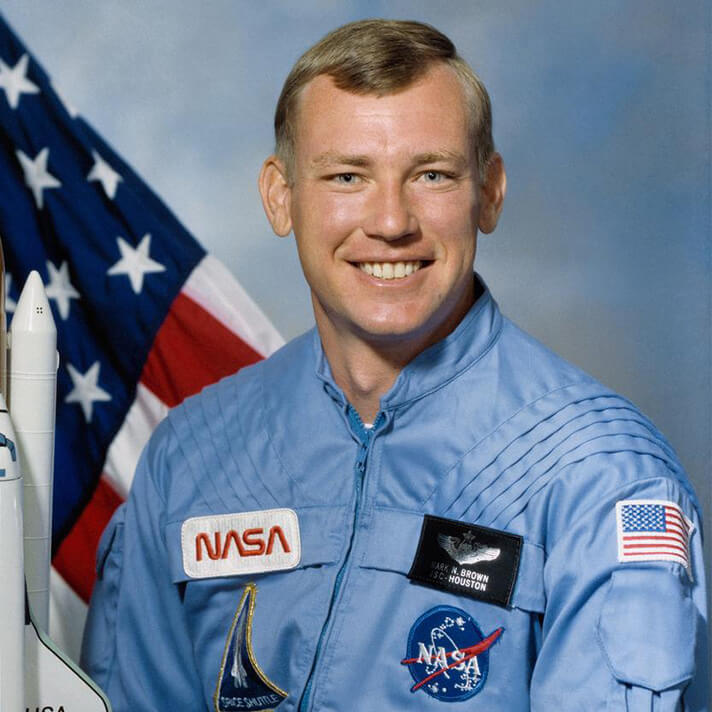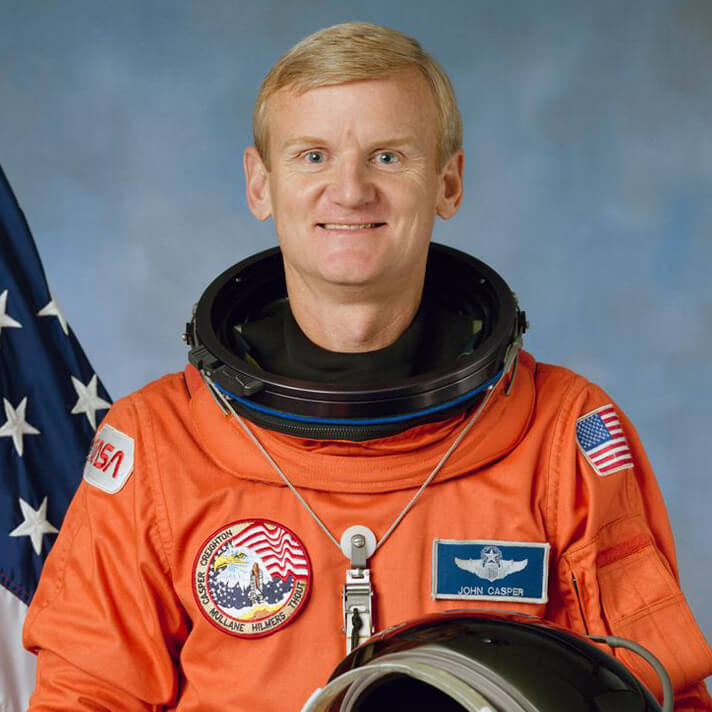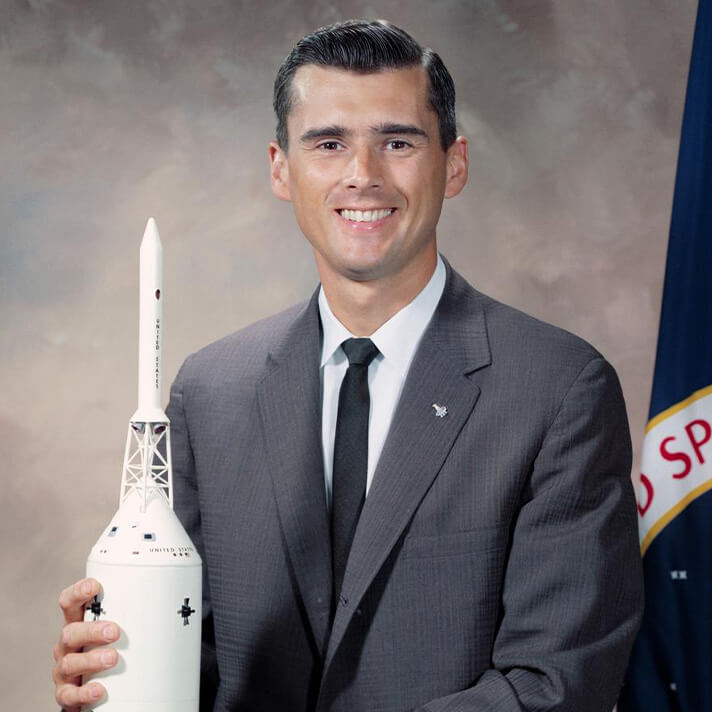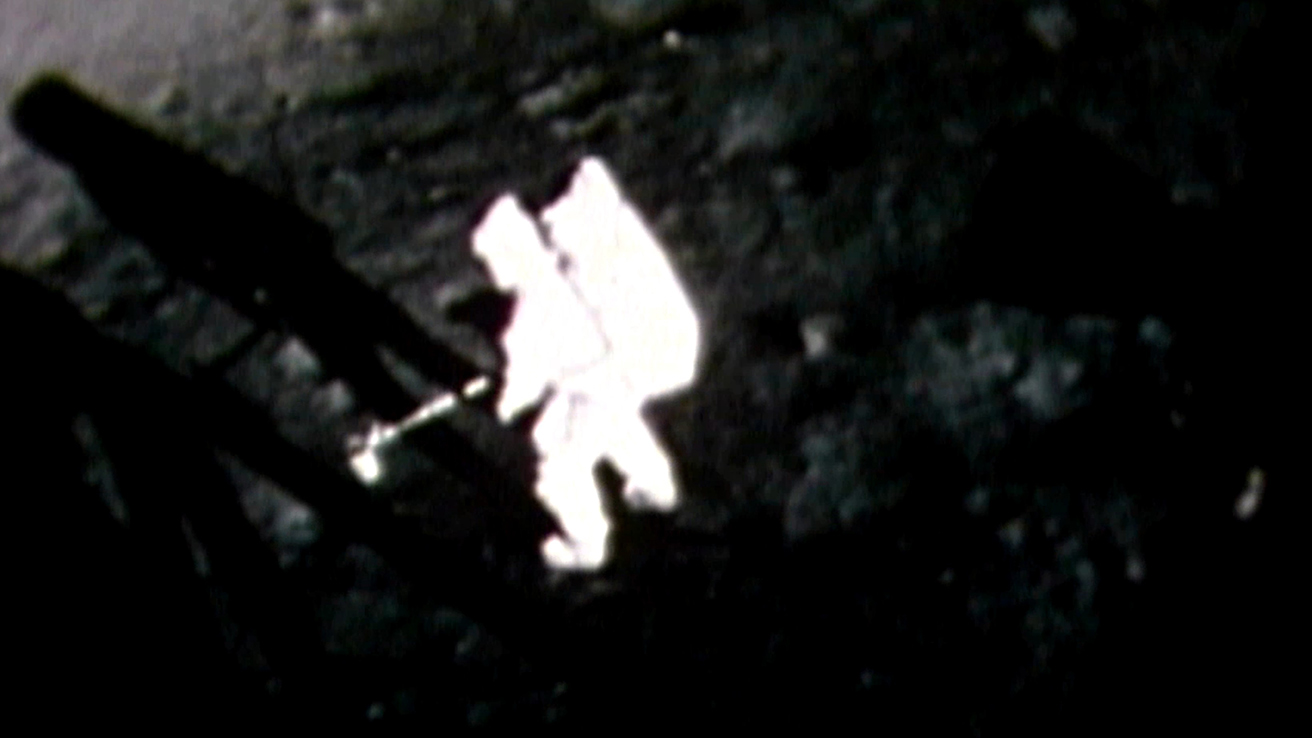
Neil Armstrong
BS aeronautical engineering ’55
1930-2012
Missions: Gemini 8, Apollo 11
On July 20, 1969, Neil Armstrong became the first person to step onto the moon’s surface, speaking the famous words “That’s one small step for a man, one giant leap for mankind.” He served as commander of this historic Apollo 11 mission, on which he also became the first person to land a spacecraft on the moon.
Three years earlier, Armstrong performed the first successful docking of two vehicles in space as command pilot for the Gemini 8 mission. That mission made him the first American civilian to venture into space. On Gemini 8, he carried a ceremonial flag that Purdue President Frederick Hovde had given him.

Neil Armstrong NASA Bio
Learn More
In 1947, Armstrong enrolled at Purdue under the Holloway Plan, which covered college tuition for applicants who would attend the first two years of college, then complete two years of flight training and one year of service as an aviator in the U.S. Navy before returning to college for their final two years of academic study.
Between 1951 and 1952, Armstrong was a naval aviator during the Korean War, flying 78 missions for a total of 121 hours in the air. He was released from active duty in August 1952 and returned to Purdue, where he completed his bachelor’s degree in January 1955. Following graduation, Armstrong became an experimental research test pilot, flying more than 200 different models, including seven flights aboard the North American X-15 hypersonic rocket-powered aircraft.
Armstrong became an astronaut in 1962, part of NASA’s second group of astronauts, and retired from the space program in 1971. He received an honorary doctorate from Purdue in 1970 and countless awards and honors, including the Presidential Medal of Freedom and Congressional Gold Medal.
In 2007, Purdue dedicated the Neil Armstrong Hall of Engineering, the flagship of the College of Engineering. Outside the front entrance is an 8-foot-tall bronze sculpture of Armstrong, depicting him as the 1950s Purdue engineering student who played baritone in the Purdue “All-American” Marching Band and was a member of Phi Delta Theta fraternity. Next to the statue is a replica of the first 20 footsteps that Armstrong took on the moon, correct to the size and distance between each step.
Hanging from the 53-foot atrium inside Neil Armstrong Hall is a full-scale replica of the Apollo 1 command module in which Purdue alumni Virgil “Gus” Grissom and Roger Chaffee and fellow astronaut Ed White died in 1967.

